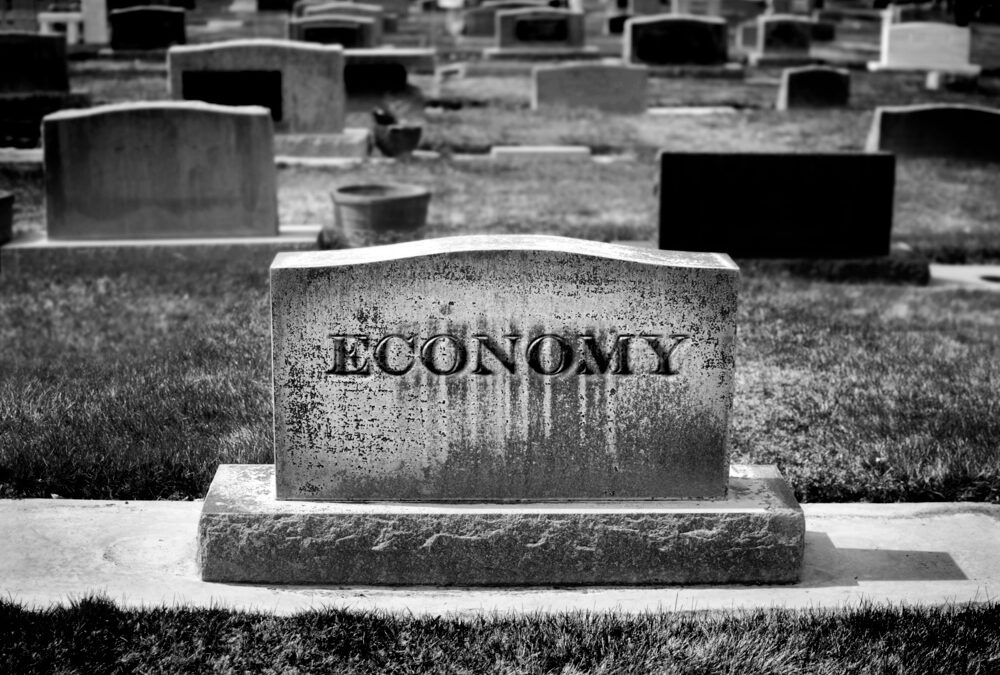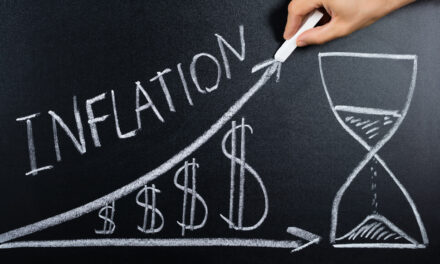SAN MARTIN, ARGENTINA — Today, we consult the (fictional) “Argentine Economic Survival Manual.” There’s no better resource. Because there’s no cockamamie money scheme… no jackass spending program… and no underhanded ripoff that the Argentines haven’t tried… at least once.
Inflation here is now 50% per year… But it’s been as high as 50% per month. The value of the peso — against the U.S. dollar — has dropped 30% since we arrived three months ago.
There’s the black market, the white market (at official exchange rates), and the blue market (unofficial, but tolerated)… exchange controls… price controls… trade controls. And now, even controls on where you can go (keep reading).
How do people here survive? How do they protect their wealth… or even make money in the first place? More on what we’ve learned recently in a minute…
No Foreigners Allowed
We left Salta city yesterday. Life in the city is fairly agreeable. But everything seems to be operating at only half-speed. Traffic is light. Opening hours are limited. Lines form in front of stores, with people keeping six feet apart. Hotels are all closed, so we had to stay in an Airbnb, which wasn’t bad.
Then, leaving the city, we headed south. The idea was to take a different route back that would allow us to check on some farm equipment.
It is autumn here. Fields are covered in yellow wildflowers. The leaves have turned red. The sun is bright, but the days are cool. The drive was idyllic.
We drove along, enjoying the fall scenery. But we were brought to a halt in every small town, where policia wanted to know where we were coming from and where we were going. They were polite, and generally waived us through.
We were already two hours into our journey when a young cop decided to go above and beyond the call of duty. He wanted to know where we spent the “quarantine” and how we had gotten so far without being stopped.
The town we were going to, Cafayate, he told us, had a very strict control policy. We couldn’t go there.
“But we have a permiso,” we protested, holding up our electronic authorization. He called his superior in Cafayate on the phone.
We overheard the conversation. “They’re foreigners? Then they can’t come in.”
Odd and pointless as it was, we were turned back. The policeman apologized, but insisted that the law was the law and that we could go no further.
Instead, we had to take the long way around, up and over the mountain, and down into the valley from there. Along the road, in the middle of nowhere, was an old man, who flagged us down.
“Where are you going, old-timer?” we asked.
“To Payogasta.”
“Bueno, get in.”
The law says that everyone must wear a face mask. But the old man had none.
“Don’t you need a face mask?” we asked.
“No… I don’t pay any attention to them.”
After an hour or so together, we turned off the road to Payogasta, leaving our passenger in the middle of a vast, open valley. With no buildings… no trees… no shelter of any sort, and temperatures dropping well below freezing… we wondered…
“I hope another car will come along,” we said cheerfully.
“Yeah… there are at least a couple cars every day. No problem.”
Scientific Experiment
But we are back at home now, keeping an eye on the future… by looking at Argentina’s past.
We met Eduardo Elsztain in the 1990s. He is one of the most successful businessmen and investors in Argentina. He is also one of the nation’s largest property owners.
Eduardo regards Argentina as a science experiment. Here, you can see what you get when you run large government deficits, control consumer prices, protect crony businesses with tariffs, buy off voters with giveaways, restrict the movement of capital, and generally mismanage an economy over a 70-year period.
In a recent report, he tells us what he has learned about crappy finance on the pampas:
…Argentina has systematically used the “printing machine” to finance deficits, evaporating the value of the local currency throughout its history. That mechanism was used so frequently that the country had five different currencies in the last 140 years, which deleted 13 zeros throughout that time.
Even more, the current peso used today, that was instituted back in 1992, represents only 0.01 pesos in purchasing power of the original one. So that makes an effective deletion of 15 zeros in the purchasing power of the Argentine currency in the last century and a half!
The U.S. dollar has a much better record. Still, it is not unblemished. It was worth 1/35th of an ounce of gold in 1971. Now, it is only worth 1/1700th.
But it’s not the dollar’s past that concerns us; it’s the dollar’s future. There are still a lot of zeros out there!
Original Peso
Argentina once had a decent economy… the seventh richest in the world… and a decent currency, too. In 1881, its president, Julio A. Roca, came out with the Argentino de Oro — a gold coin with 0.2334 ounces of gold.
Some of these coins were still in the Argentine Central Bank vaults as recently as the late 1990s. Eduardo gave us one when we first met him.
But by that time, the country had been buried under repeated blizzards of paper money. The peso and the austral (the currency of Argentina between June 15, 1985, and December 31, 1991, had come and gone. Zeroes were added… and then stripped off.
But the Argentino de Oro — the gold coin minted more than 100 years previously — never lost a dime of value. Eduardo explains:
This Argentino de Oro, whose original price in 1881 was 5 pesos, would be valued today at 452.3 quadrillion (that is 15 zeros) pesos, or 9.4 quintillion percent “return” on the investment, measured in the original currency, if you consider all the subsequent currency changes that the country has gone through.
The important thing, though, was not that the gold coin was a good investment. It wasn’t. It was exactly the same coin in 1990 — and still is today — that it was in 1881.
But if you had held the coin — rather than the paper-money peso — it would have “prevented the loss of 99.999% of the wealth” represented by the original peso of the time.
Toxic Policies
And what can we learn from this? Eduardo again…
What our experience tells us is that when the national governments need to finance deficits, they will not hesitate to print as much money as possible to cover their short-term needs, especially if the effect of that printing emission is generating no impact (i.e. no inflation), as is the case today in developed countries.
For this reason, we have no doubt that, as a result of the current crisis, countries around the world will keep running record fiscal deficits, while the Federal Reserve and other central banks will keep buying national and corporate bonds, along with printing money as never before in modern history.
Does this mean inflation is around the corner? Maybe. Maybe not. We are now caught in a deflationary downdraft. We don’t know how long it will take to get back to positive inflation. But like Eduardo, we have little doubt that we will get there. Eduardo continues:
…bear in mind that the unemployment rate will likely remain at a very high level. And the U.S. government and the Federal Reserve will do “whatever it takes.” This gets us to the conclusion that the fiscal deficits and printing of money will be so remarkable that once double-digit inflation comes in, it will be too late to reverse those toxic policies.
Imagine that the U.S. economy is just pulling out of recession. Finally, people are getting back to work. Finally, prices are starting to rise. Finally, bankruptcies are going down…
And imagine that trillions in new money-printing are widely considered the cause of the “recovery,” as feeble as it may be.
And imagine that inflation rates are rising… to 5%… 8%… 10%.
And now… it’s time to stretch your imagination.
Try to imagine the Fed chairman… or the U.S. president… announcing an austerity program — lower deficits, higher Fed lending rates, and a tightening of the money supply… to fight inflation.
It’s not going to happen. The economic emergency will be so fresh in people’s minds… and the threat of a deep crash and a lingering depression will be so real and menacing…
In other words, the necessity of further money-printing will be so great, that no Fed governor, no matter how otherwise sane and prudent, will be able to slow the printing presses.
We’ll leave the final word to Eduardo…
In this context, the “Argentine Economic Survival Manual” shouts that… with fiscal deficits, the highest debts ever, money printing as never before, and economic depression, any person with small or big savings should move a relevant amount of his liquidity to the only currency that cannot be printed: Gold.
Next … Another lesson from Argentina… and America’s worst economic policy ever.
In preview: We really are “on our way”… to the pampas!
Stay tuned…
Regards,
Bill
• This article was originally published by Bonner & Partners. You can learn more about Bill and Bill Bonner’s Diary right here.




